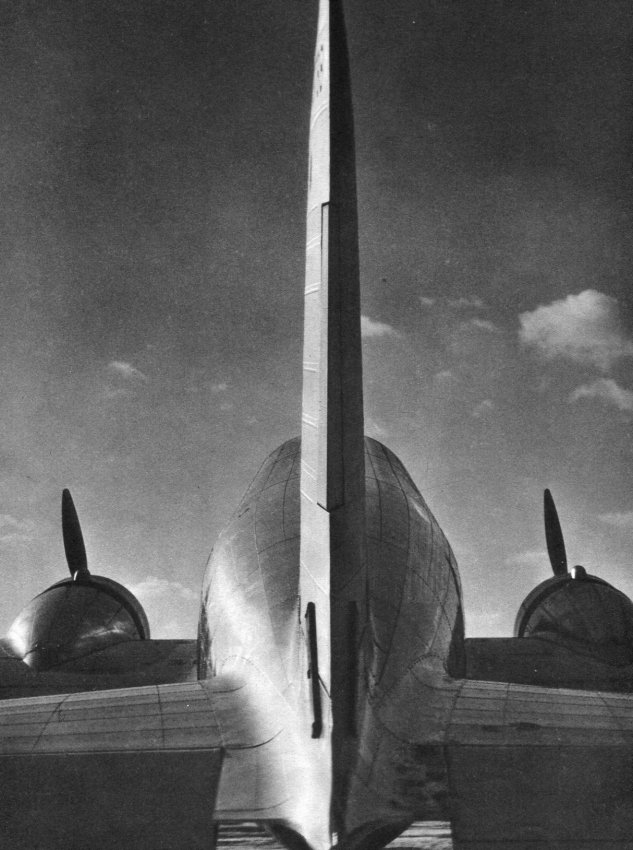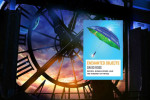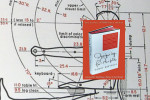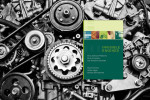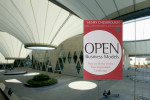One age’s art cannot match the technology of another age. In the 1920’s and 1930’s, when Sheldon and Martha Cheney wrote Art and the Machine , the machine was the dominant technology and modern abstract art was the new creative principle. A new profession then, industrial evolved in response to the machine and mass produced goods. The dominant forms of art from the handicraft and manual production age had been overlaid on machines and machine-made goods to disastrous effect–electronic devices disguised as furniture and clad in wood. The handicraft movement was suitable for the manual mode of production, but could not transfer its usefulness and applicability to the new age of machines. Attempting to overlay the Renaissance sensibility over new technology resulted in a misfit of form and function. Modern Abstract art with its new materials, streamlines, and machine-shapes was the art of the new age. Technology provides the materials and means of production; art interprets and brings the technology into the realm of society and our lives. The authors call this as the “flow back through the channels of useful things.” Artistic creativity balances the engineering tendency to focus on efficiency and function.
, the machine was the dominant technology and modern abstract art was the new creative principle. A new profession then, industrial evolved in response to the machine and mass produced goods. The dominant forms of art from the handicraft and manual production age had been overlaid on machines and machine-made goods to disastrous effect–electronic devices disguised as furniture and clad in wood. The handicraft movement was suitable for the manual mode of production, but could not transfer its usefulness and applicability to the new age of machines. Attempting to overlay the Renaissance sensibility over new technology resulted in a misfit of form and function. Modern Abstract art with its new materials, streamlines, and machine-shapes was the art of the new age. Technology provides the materials and means of production; art interprets and brings the technology into the realm of society and our lives. The authors call this as the “flow back through the channels of useful things.” Artistic creativity balances the engineering tendency to focus on efficiency and function.
The early years of industrial design
[the industrial designer] must be competent and authoritative among the rational facts of product design, supplementing not frustrating the work of the product engineer: he must keep appropriately sensitized to fluctuating merchandise demands and nuances of public psychology…
As an “artist-technologist”, the industrial designer is able to combine artistic value with practical considerations. Cheney and Cheney write about the early years when industrial design was emerging as a discipline and industrial designers were taking projects which ranged from cutlery sets to transportation systems to public spaces. The designer has not only technical skills, but also a keen aesthetic sense which allows her to sense the public taste of the time. This blend of skills and intuition allows market-appropriate product to be created.
In the 1920’s and 1930’s industrial designers were already combining marketplace considerations with usability and aesthetics. The discipline had moved far beyond merely adding stylistic elements after the core product was complete. This is the same trajectory that user experience design took in the computer age. Graphic designers came to the field of software engineering and were at first relegated to the tail end of the process, but eventually worked their upstream until they had full view over the entire product development cycle.
Commercial interests
Always there is the triple responsibility which is implied in the nature of the service to be rendered: to design what the factory can product advantageously; to design what the public will accept extensively if not enthusiastically; to design what is acceptable, according to his own aesthetic judgment…
Consumer demand drove the need for industrial design–the machine-age created a glut of mass-produced objects which necessitated a design response to ensure market acceptance. The consumer response to the manufactured goods was dissatisfaction, to which the industry responded by bringing artists and designers to evaluate and improve the products.
The dream of planning and design
Our need is the wider recognition of art as a biological function, and a constructive planning of our modes of living which takes full cognizance of this function. An artist must plan the distribution of cities within a region; an artist must plan the distribution of buildings within a city; an artist must plan the homes themselves, the halls and factories…
Already we can glimpse the community of tomorrow as a place unified and harmonious: an industrially designed machine-age entity, its considered patterning of buildings and spaces, its landscaping public and private, are a coming realization of the universal utility of the machine as dreamed by the boldest of nineteenth-century industrial pioneers, and as transubstantiated by the boldest of the pioneering abstract artists: the industrial designers. It is the emergent product of the twentieth-century industrial pioneers: a new American scene, coordinated, artist-determined, machine-realized.

The dream of industrial design was that careful planning and inspiration could be applied to larger and larger problems. Because industrial design inspiration flowed from the arts, there was an assumed purity of thought and expression. If this intellectual purity could be harnessed in larger domains, the woes of the world could be cured. However, the vision of the artistic caste putting forth beautiful and functional objects which fit into a clean clockwork society would be slowly eroded by wars, economic reality, and postmodern themes. The streamlining and removing of blemishes and defects matched a Utopian world view. Shiny metallic efficiency was to extend to all our lives.
The machine aesthetic
the Bauhaus accepted the machine as the essentially modern vehicle of form, and sought to come to terms with it
—Walter Gropius
Industrial design was responding to the needs of the time and the evolution of society to a machine-centric lifestyle. The streamlined transport is “a symbol of twentieth-century machine-age speed, precision, and efficiency.” The perfection of nature was matched by science with the perfect machine. The machine’s primary purpose is efficiency; therefore, it does not waste materials in its construction. The form expresses the function.
Cheney and Cheney choose the airplane as symbolic of the machine aesthetic which was coming into widespread use during the late 20’s and early 30’s when the book was written. The authors called the airplane “the most perfect objectification of safe and efficient speed.” The streamlined shape of airplanes and cars evoked speed and new age of free travel. The streamline comes from the heavens down to earth and informs the design of worldly things–it is a mirror of the freedom and simplicity of the flying machine.
Similarly, the use of metal and glass brought entirely new forms to architecture which were impossible with stone and lumber. The materials of the age made possible the technology and provided the context for artistic expression.
Form and function
Although the Cheneys argue against the ornamental and decorative themes in industrial design which they term “styling”, they cite many examples of industrial designers placing streamlined casings over machines for the purpose of hiding blunt edges and hard shapes. As the artist worked by hand with natural materials in an earlier time, artists now were working with machines that produced other machines and millions of identical objects. The forms of the age were machine forms and the materials were machine produced. The line between engineering and art was blurred as artistic expression grounded itself in the ubiquitous machines.
The first image in the book is a picture of an airplane by
Dmitri Kessel. It symbolizes ideals of the time: the purity of machine, its freedom, safety, and affluence. The plane is geometrically abstract, streamlined, and points to the sky–the future.
This book was written four years before World War II and the dawn of the Atomic Age. Space flight was more than forty years away; the internet was fifty years in the future. It is a fascinating study of a major revolution in product development at an intersection of cultural and technology change. So many more contextual changes were in the future.
These new “artist-technologists” (Geddes, Teague, Dreyfuss, and others) set their sights on design on a scale unimaginable before. Machines were now inhabitants of cities and the landscape, filling the roads, and building entirely new environments like airports. Industrial designers crossed the threshold beyond art into engineering and expressed the transformative power of the machine.
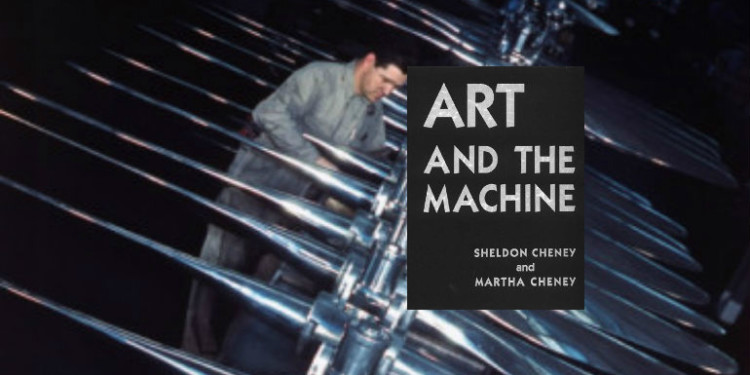
, the machine was the dominant technology and modern abstract art was the new creative principle. A new profession then, industrial evolved in response to the machine and mass produced goods. The dominant forms of art from the handicraft and manual production age had been overlaid on machines and machine-made goods to disastrous effect–electronic devices disguised as furniture and clad in wood. The handicraft movement was suitable for the manual mode of production, but could not transfer its usefulness and applicability to the new age of machines. Attempting to overlay the Renaissance sensibility over new technology resulted in a misfit of form and function. Modern Abstract art with its new materials, streamlines, and machine-shapes was the art of the new age. Technology provides the materials and means of production; art interprets and brings the technology into the realm of society and our lives. The authors call this as the “flow back through the channels of useful things.” Artistic creativity balances the engineering tendency to focus on efficiency and function.
 The dream of industrial design was that careful planning and inspiration could be applied to larger and larger problems. Because industrial design inspiration flowed from the arts, there was an assumed purity of thought and expression. If this intellectual purity could be harnessed in larger domains, the woes of the world could be cured. However, the vision of the artistic caste putting forth beautiful and functional objects which fit into a clean clockwork society would be slowly eroded by wars, economic reality, and postmodern themes. The streamlining and removing of blemishes and defects matched a Utopian world view. Shiny metallic efficiency was to extend to all our lives.
The dream of industrial design was that careful planning and inspiration could be applied to larger and larger problems. Because industrial design inspiration flowed from the arts, there was an assumed purity of thought and expression. If this intellectual purity could be harnessed in larger domains, the woes of the world could be cured. However, the vision of the artistic caste putting forth beautiful and functional objects which fit into a clean clockwork society would be slowly eroded by wars, economic reality, and postmodern themes. The streamlining and removing of blemishes and defects matched a Utopian world view. Shiny metallic efficiency was to extend to all our lives.Art and the Machine: An Account of Industrial Design in 20Th-Century America
